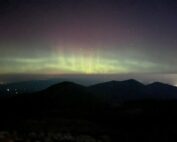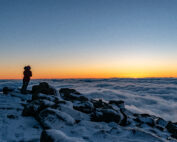Looking Ahead to Fall
2018-08-12 15:23:23.000 – Griffin Mooers, Summit Intern
As summit observer Adam Gill has previously discussed, summer has been uncharacteristically hot for the summit of Mount Washington, with this past July ranking as the second warmest of all time, with an average temperature a toasty 53.1 degrees Fahrenheit.
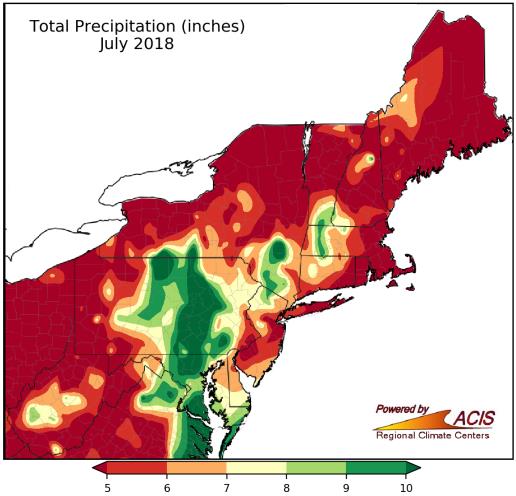 Source: http://www.nrcc.cornell.edu
Source: http://www.nrcc.cornell.eduThe summer also started out unusually dry. However, frequent showers in the last couple of weeks in favorable peaks helped the White Mountains catch up to an above normal total precipitation for July. But the Northeast as a whole has been unusually dry. Much of New Hampshire, and New England more broadly are still in abnormally dry to moderate drought conditions.
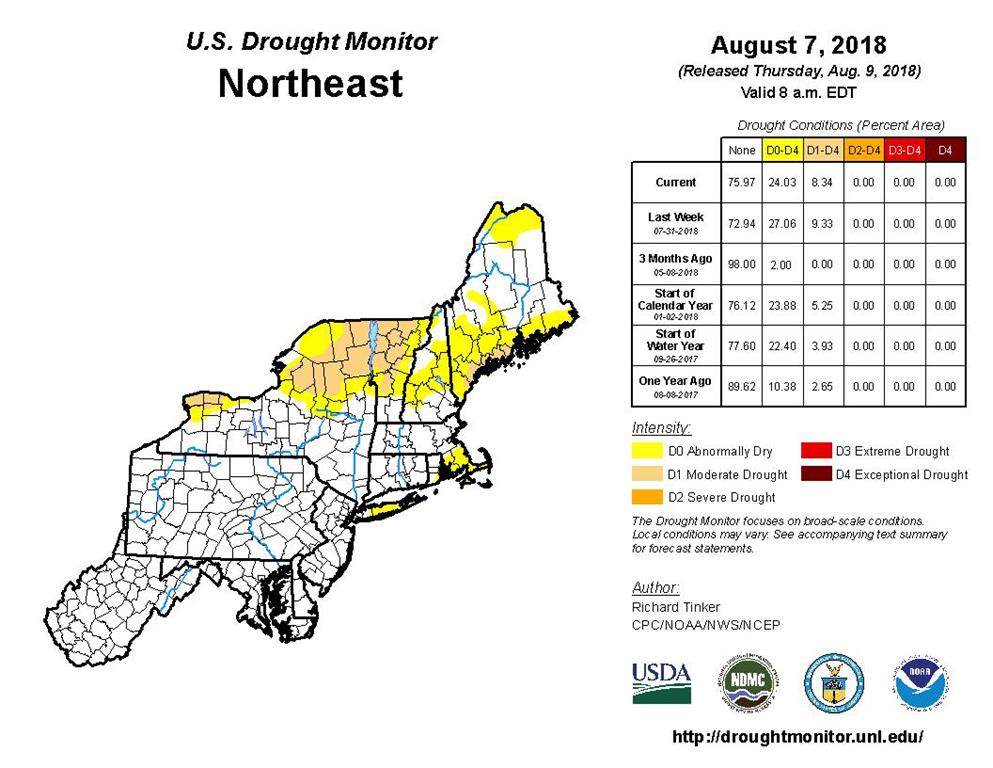
But what does this coming fall hold for Mount Washington, and the northeast more broadly? While predicting the exact weather conditions months in advance is impossible (making a 48 hour higher summits forecast is already challenging), our understanding of inter-annual oscillations and teleconnections allows meteorologists to say in broad strokes what the year ahead may bring.
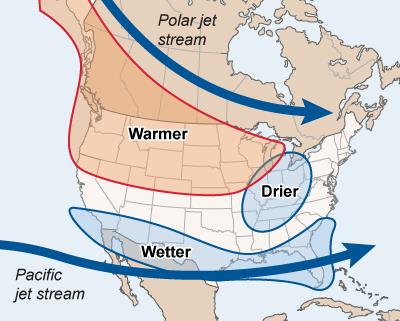 Map from noaa.gov depicting the effects of a typical El Nino on the U.S. weather pattern
Map from noaa.gov depicting the effects of a typical El Nino on the U.S. weather patternEl Nino is characterized by especially weak east to west winds over the pacific that allow for warm water to flow from west pacific to South America. While we have spent much of the past year La Nina conditions (the reverse of El Nino), the Climate Prediction Center believes we have at least a 60% chance of entering into an El Nino phase by Fall, and an even higher chance by winter. Although far from the only factor in determining dominant weather conditions, it can have a large impact on the continental U.S., generally leading to cold, damp winters in the far south, and milder, drier conditions elsewhere. This prediction of an El Nino is reflected in NOAA’s extended temperature and precipitation outlooks for the continental United States.
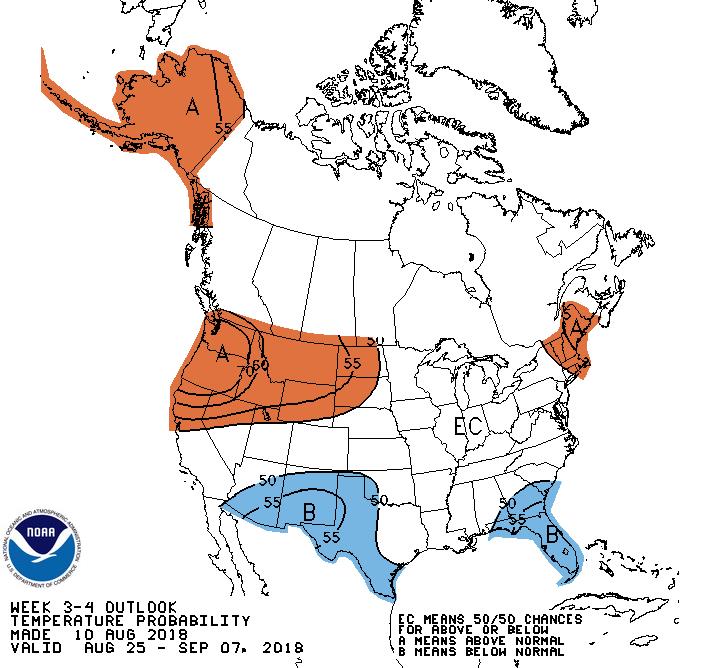
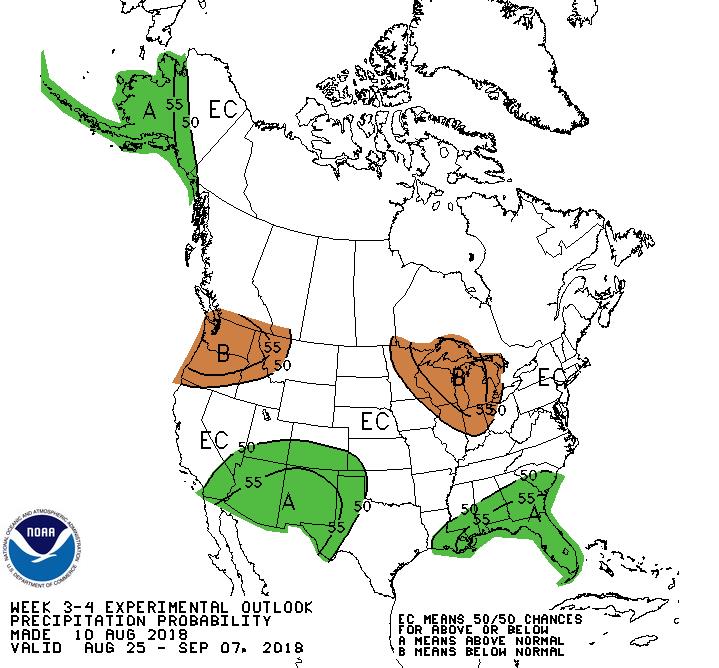 The climate prediction centers 1 month outlooks for temperature and precipitation. You can see the anomalies match very closely with the predicted effects of an El Nino event on the U.S.
The climate prediction centers 1 month outlooks for temperature and precipitation. You can see the anomalies match very closely with the predicted effects of an El Nino event on the U.S.So while it looks like there will not be an unusually high amount of rain to beat back the dry conditions, the drought is also not expected to worsen significantly into the fall. The likelihood of an El Nino event should keep the polar jet unusually far north, indicating a chance for a milder than usual fall and winter season. However, it should be noted that each El Nino is different, and the intensity of the El Nino event itself can have an impact on the resulting conditions, so the long term outlook is subject to change as fall approaches.
Griffin Mooers, Summit Intern
From Mountains to More Mountains
From Mountains to More Mountains: This Time with Stronger Winds By Alyssa Bélanger On the observation deck in high winds. Hello there! My name is Alyssa Bélanger and I am a fall
From Summit to Sign-Off: My Farewell to the Rockpile
From Summit to Sign-Off: My Farewell to the Rockpile By Amy Cotter Enjoying my last Mount Washington sunset (for now) on September 13, 2025. After two incredible years with the Mount Washington
Trail Report: Seek the Peak Hikes 16 and 17!
Trail Report: Seek the Peak Hikes 16 and 17! By Chris Nichols September 22, 2025 – Summit 16 of 17 A chilly morning turned into a spectacular day on Mount Washington. The thermostat in

